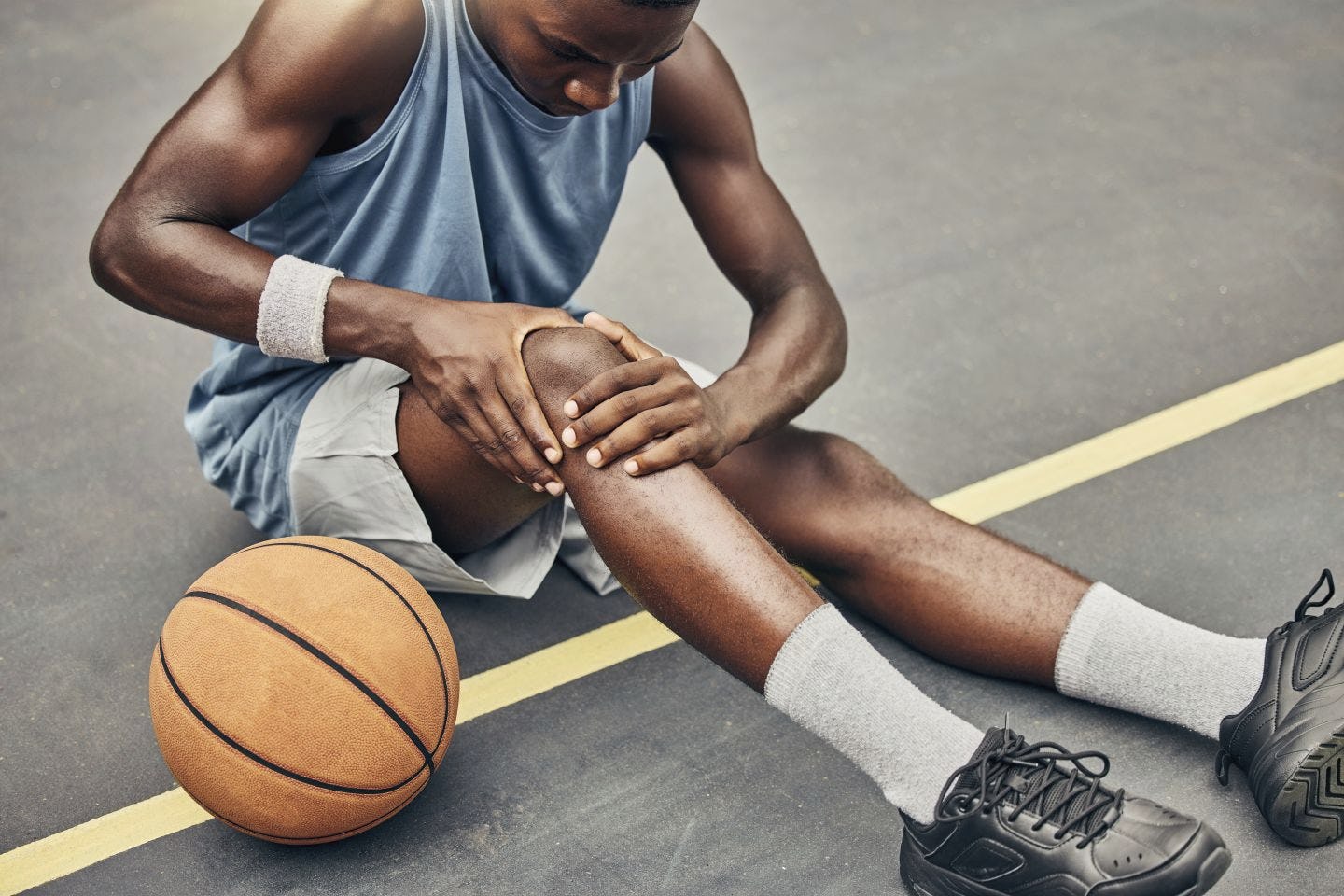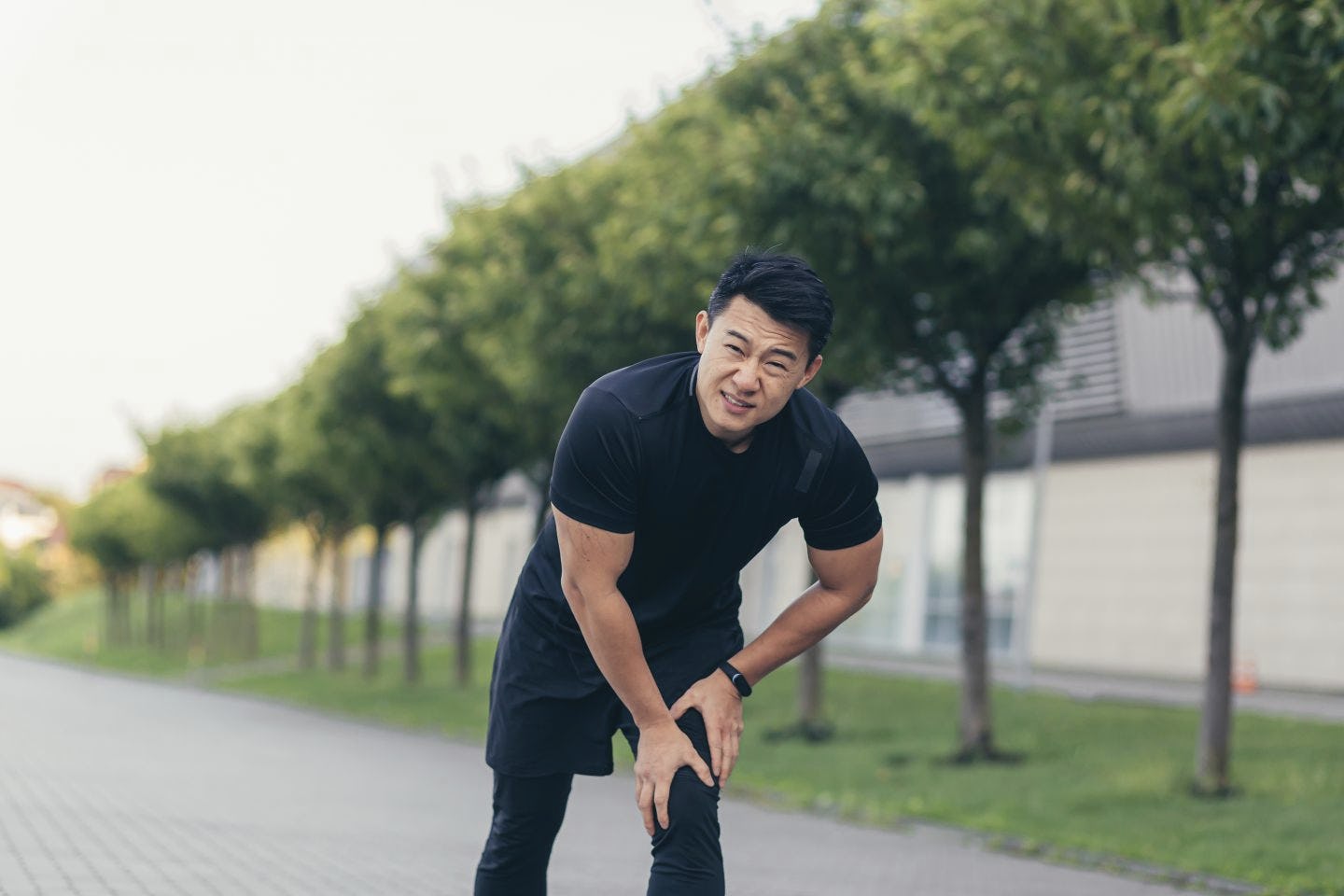-
You don’t have to be a pro in order to be considered an athlete. Some athletes train to compete while others train simply to progress in a sport and become stronger. Whatever your case may be, our physical therapists can help you in the unfortunate event that you sustain a sports injury. Contact Optimal Motion Physical Therapy today to find out how we can help you recover from your sports injury as quickly as possible!
How do sports injuries occur?
When most people think of sports injuries, they think of it in more traditional terms, such as pro football players getting hurt during a tackle. However, the term “sports injury” is all-encompassing, including any type of injury that occurs while performing an athletic activity. It can happen just the same by lifting heavy weights at the gym or running in ill-fitted shoes as it can by swinging a bat too aggressively or rolling your ankle on the soccer field.
One of the most important aspects to rehabilitating a sports injury is treating it as soon as possible. Your treatment plan and duration of recovery will vary depending on how severe the injury is, your health history, and whether or not the injury requires surgical intervention.
What type of injury do I have?
There are a number of different injuries that can occur while performing athletic activity; however, the most common forms of sports injury include:
- Strain or “pulled muscle.” A strain, also referred to as a “pulled muscle,” occurs when a tendon connecting your muscle to bone is stretched beyond its limits. Once the tendon is stretched, it is more likely that it will be strained once again.
- Sprain. A sprain is similar to a strain, but they are not quite the same. A sprain occurs when a ligament connecting one bone to another is stretched beyond its limits. Much like a strain, once a sprain occurs and a ligament is stretched, it is more likely that it’ll occur again.
- Shin splints. The medical term for shin splint is “medial tibial stress syndrome,” referring to pain that is felt in the shin bones. This pain is typically caused by stress placed on the shinbone and the connective tissues surrounding it. Shin splints are painful and often debilitating; however, they can be avoided by wearing proper footwear, warming up before exercise, and strengthening your core and leg muscles.
- Knee injuries. Your knee is the most complex joint in your body and is therefore one of the most commonly injured body parts. Knee injuries may include dull aches that run from your hip to your knee, repetitive use injuries making it difficult to move the knee, or more severe injuries such as an ACL tear.
How does physical therapy help?
Our Herndon physical therapists are highly trained movement specialists. Through physical evaluations, they are able to examine the moving body in order to prescribe the best treatment plan for your specific needs. Once your diagnosis has been determined, your physical therapist will create a specialized treatment plan for you, taking into account the nature of your injury, your fitness level, and your lifestyle.
Your treatment plan will typically include manual therapy to increase your range of motion and reduce scar tissue, stretches to improve balance and mobility, and strengthening exercises to enhance the injured area, as well as its surrounding areas. These are all done to help you recover after your sports injury and to prevent further injury from occurring in the future.
If you have recently sustained a sports injury, call Optimal Motion Physical Therapy today to find out more about how we can help you. We can set up an appointment for you and get you started on the road to pain relief and recovery!
-
Running is an impact sport. While not experiencing the body blows seen in football or crashing into a snowbank while skiing, runners are placing impact on their bodies with every step they take. Ground reaction forces have been measured from 1.5 to 3x your body weight with every step. That load is absorbed throughout the body, primarily in the muscles and joints of the low back, hips, knees, ankles, and feet. These are all common areas for runners to complain of pain or injury.
Statistics vary, but it is reported that 30 to 75% of runners are injured every year. These injuries include, but are not limited to:
- Knee pain/”Runners knee”
- Achilles Tendonitis
- Hamstring strains/tendonitis
- Plantar fasciitis
- Shin Splints
- Plantar fasciitis
- Stress fractures/stress reactions
An injured runner that can’t run misses out on training, on well-being, on their routine. Unless you’re playing chess, it’s likely your sport involves some aspect of impact, which increases your risk of injury. At Optimal Motion Physical Therapy, we will assess and treat your injury, but also go a step further and try to find contributing causes to your injury so those causes can also be addressed to reduce your risk of future injury.
Optimally, it takes a team approach to keep the athlete’s body functioning at its best. This team can include a number of professionals including your physicians, nutritionist, chiropractor, massage therapist, coach, trainer, and psychologist. We will work with your team to develop the best plan for you. (On a side note, this is a great approach for all our clients, whether you consider yourself an athlete or not).
Even if you are not injured, keep an eye out for our free injury screens, or Contact Us Today at Herndon, VA Center for a more comprehensive running assessment.


